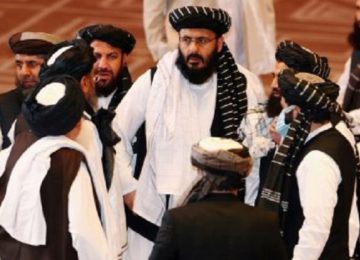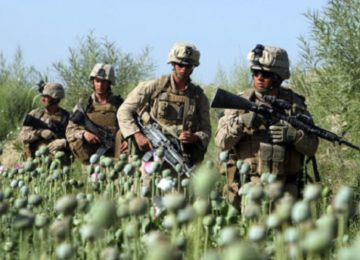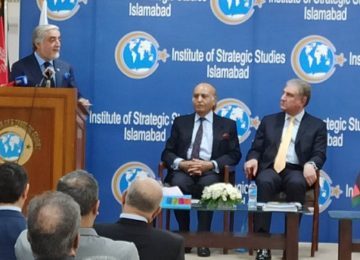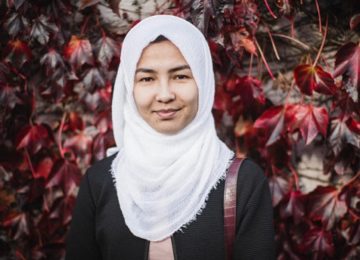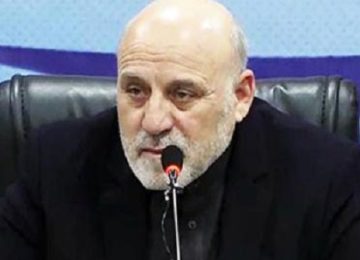June 9, 2020
According to the Eleventh Report of the United Nations Analytical Support and Sanctions Monitoring Team (MT), Member States point out that narcotics smuggling networks operate in Nangarhar and into Pakistan with the reported acquiescence of security officials who regulate and profit from the smuggling of heroin, hashish and other goods.
“Security officials reportedly allowed smuggling syndicates, known as tanzeems, to operate without fear of arrest in return for a portion of the profit. Revenues were ultimately shared between security officials, heads of the tanzeems and the Taliban.
Interlocutors stated that this system was “a big source of revenue for the Taliban”, says the MT, a copy of which is available with The News. It further points out that among those groups posing a security threat, Afghan officials highlighted Tehrik-e-Taliban Pakistan (QDe.132),37 Jaish-i-Mohammed (QDe.019) and Lashkar-e-Tayyiba (QDe.118), groups on which the monitoring team has written in previous reports.
“The presence of these groups is centred in the eastern provinces of Kunar, Nangarhar and Nuristan, where they operate under the umbrella of the Afghan Taliban”, points out the report.
Tehrik-e-Taliban Pakistan adds the MT is led by Noor Wali Mehsud (not listed) and his deputy, Qari Amjad (not listed). The group is thought to have approximately 500 fighters in Kunar and about 180 in Nangarhar. One Member State reported that the total number of Pakistani nationals fighting with terrorist groups in Afghanistan may be as high as 6,000 to 6,500.
According to Afghan interlocutors, says the MT, Jaish-i-Mohammed and Lashkar-e-Tayyiba facilitate the trafficking of terrorist fighters into Afghanistan, who act as advisers, trainers and specialists in improvised explosive devices.
Both groups are responsible for carrying out targeted assassinations against government officials and others. Lashkar-e-Tayyiba and Jaish-i-Mohammed were stated to have approximately 800 and 200 armed fighters, respectively, co-located with Taliban forces in Mohmand Darah, Dur Baba and Sherzad Districts of Nangarhar Province. Tehrik-e-Taliban Pakistan also maintains a presence in Lal Pura District, near the border area of Mohmand Darah, Pakistan. In Kunar Province, Lashkar-e-Tayyiba retains a further 220 fighters and Jaish-i-Mohammed has a further 30, all of whom are dispersed within Taliban forces.
On Feb 6, 2020, Tehrik-e-Taliban Pakistan announced the death of two of its top leaders, former deputy Abu Mohammad Khaliq Haqqani and military commander Saifullah Peshawari. The men were reportedly killed in Kabul after travelling from Paktika Province.
Other foreign terrorist groups identified as presenting a significant threat were Central Asian and Uighur militant groups that have long been present in the Afghanistan-Pakistan region.
“According to Member States, the Eastern Turkistan Islamic Movement is located mainly in Badakhshan, Kunduz and Takhar Provinces. Abdul Haq (QDi.268) remains the group’s leader, aided by his deputy Kausali (not listed). According to one Member State, Farooq in Paktika Province is the group’s logistics chief, Shoaib in Uruzgan Province is a senior operative and Hamza and Abdussalam in Paktika Province are religious leaders. Approximately 500 fighters of the group operate in the north and north-east of Afghanistan, primarily in Raghistan and Warduj Districts, Badakhshan, with financing based in Raghistan,” adds the report.
It points out that according to one Member State, the Eastern Turkistan Islamic Movement collaborates with Lashkar-e-Islam and Tehrik-e-Taliban Pakistan. The Member State reported that the Eastern Turkistan Islamic Movement has a transnational agenda to target Xinjiang, China, and the China-Pakistan Economic Corridor, as well as Chitral, Pakistan, which poses a threat to China, Pakistan and other regional states.
India was first to comment on the MT and later the Foreign Office here reacted. Last week, the Foreign Office said that the spokesperson of the Indian Ministry of External Affairs (MEA) has misrepresented the Eleventh Report of the United Nations Analytical Support and Sanctions Monitoring Team (MT) concerning the Taliban and other associated individuals and entities constituting the threat to the peace, stability and security of Afghanistan, to slander Pakistan. “India has been using terrorism as state policy to destabilise its neighboring states, and this reveals that India’s agenda is to create complications for the Afghan peace process. Pakistan has warned the world about the role of spoilers within and outside Afghanistan”, the Foreign Office pointed out.
“The Report is based on briefings provided in Afghanistan to the MT by certain quarters who have long expressed skepticism about the Afghan peace process. This skepticism is not shared by the larger international community, especially the UN Security Council and the UN Secretary General,” it added.
Pakistan underlined that it has been highlighting India’s sponsorship of terrorist organisations in Afghanistan against Pakistan.
“The MT report endorses Pakistan’s stance that Tehrik-e-Taliban Pakistan (TTP) is operating from Afghanistan and with Indian support threatens Pakistan and other countries in the region. Pakistan has proposed the listing of several Indian terrorism facilitators on the UN Security Council’s terrorism list along with evidence of their involvement in terrorism. We hope the Security Council will designate them soon”, says the Foreign Office.
The MT has also assessed that foreign terrorist fighters from India are traveling to Afghanistan to join the ISIL-Khorasan (ISIL-K). Security Council resolutions require India to prevent the travel of terrorists to Afghanistan to join ISIL-K.
“The report also notes that an Indian national, the leader of aI-Qaeda in the Indian Subcontinent, was killed by international forces last year in Afghanistan. Earlier reports of MT also highlight the growing strength of ISIL in India and its role in Easter Sunday attack in 2019,” says the Foreign Office.
Read the report here.




